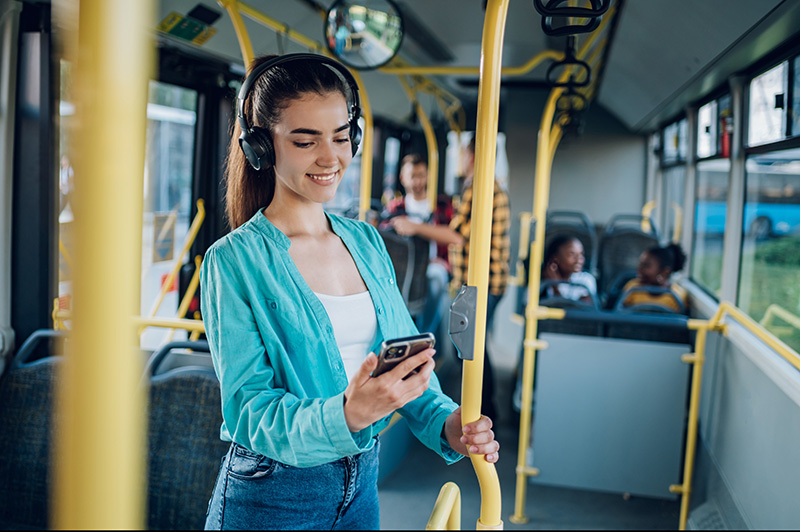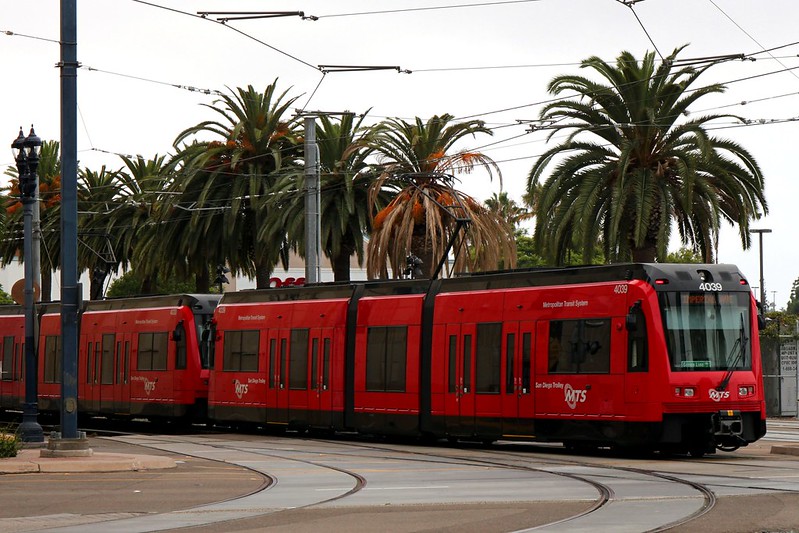
Public transportation is a low-cost, efficient, and environmentally friendly mode of transport for billions of passengers every day. However, cancelled services, long wait times, crowded carriages, and poor accessibility can make it a frustrating experience. Thankfully, Internet of Things (IoT) technology in public transportation is helping to mitigate these drawbacks.
Whether it's buses, trains, subways, or ferries, IoT in transportation systems transforms the passenger experience. Smart connected transportation systems provide numerous benefits, including real-time vehicle tracking, passenger counting, and improved reliability and performance. These services improve comfort, reduce wait times, and overall make for a much better customer experience.
What is IoT
The Internet of Things (opens new window) is about connecting everyday objects and devices to the Internet so they can send and receive data remotely to improve our experiences.
Sensors and other wireless IoT devices gather all sorts of data about equipment, processes, and locations - a.k.a. the “things”. The data is sent to a cloud or data centre where it is processed, often using advanced analytics and AI to extract meaningful insights.
There are many types of IoT sensors, including GPS trackers, cameras, and environmental sensors such as temperature, sound, and air quality monitors. IoT connectivity and data exchange help transport companies and municipal authorities track vehicles and provide real-time information to passengers. They can also look back at historical data to look for trends and ways to improve their services.

Applications of IoT in Public Transport
Real-Time Vehicle Tracking
One of the most common complaints about public transit is the lack of real-time information about when a bus/train/subway will arrive. IoT technology addresses this issue by enabling districts to track their vehicles using GPS tracking systems on connected vehicles.
These systems send the data to a central command centre. The command centre then shares the real-time information with passengers, either through their mobile devices or via electronic displays at transit stops. This allows passengers to know exactly when their vehicle will arrive, reducing uncertainty and wait times.
Passenger Counting
Accurate passenger counting is essential for optimizing service and planning future transit needs. IoT technology provides precise passenger counts by using connected sensors, cameras, and ticket scanners. This data helps transit agencies understand usage patterns, adjust capacity, and improve overall service efficiency.
Passenger counting is particularly helpful to passengers during rush hour. For example, IoT sensors can count how many passengers are in each train car. Screens at the station then display live updates about how busy each car is. This helps passengers choose less crowded cars, improving the experience for everyone.
Join our Mailing List
Join thousands of professionals and get IoT tips to help you transform your business.
Improved Reliability & Performance
Reliability is a key factor in the attractiveness of public transport. When public transport is dependable, people are more likely to use it. There's nothing worse than planning a trip only to be hit with a cancelled service.
IoT systems enhance the reliability of transit services by enabling predictive maintenance (opens new window). Sensors installed on vehicles can monitor various parameters and predict potential failures before they occur. This allows for timely maintenance, reducing the risk of breakdowns during operation.
Integrated Wi-Fi services
Public Wi-Fi services are now common on many public transport services, including buses, trains, and subway systems. A fully integrated Wi-Fi solution providing high-speed internet access to passengers dramatically improves customer satisfaction. This is especially true in subway systems and on remote bus routes. It also helps transport authorities work towards sustainability and ESG goals by enticing new customers on board their modern fleets.

Accessibility Improvements
Modern trains and buses are designed with accessibility in mind. They are flush with the platform, or have automatic platforms, making the experience pleasant for all customers. However, many transit systems consist of both new vehicles, and much older, far less accessible ones.
Real-time tracking lets passengers know when the next accessible vehicle will arrive. Similar technology to passenger counting can direct wheelchair users or those with prams to vehicles/carriages with space available.
Unexpected Events
Unforeseen circumstances like breakdowns, road closures, or inclement weather can disrupt public transportation. IoT enables transport authorities to reroute vehicles and notify passengers promptly, helping them make alternate arrangements. Transit agencies can send alerts to passengers' phones ahead of time to keep them informed.
IoT technology also aids in contingency planning. For example, in the event of a rail service disruption, internet-connected ticket scanners can provide real-time passenger counts. This allows transit agencies to determine the number of buses needed for a bus bridge, thus minimizing inconvenience.
Case Study: San Diego MTS

San Diego Metropolitan Transit System is a public transportation company serving approximately 3 million people in San Diego County. MTS schedules 7,000 trips every weekday and has more than 160 trolley cars and 750 buses in its fleet.
Problem
MTS needed a reliable way to track the real-time location of its vehicles and send this information to stations, stops, and apps for the benefit of its passengers.
Solution
Davra provided SDMTS with an enterprise-grade IoT solution to analyse and provide real-time location updates for its fleet of light rail trains. We connected back-office OT systems to downstream systems such as ETA and PA systems, text messages to digital signage, and audio messages to platform speakers. Data flows seamlessly from the Davra Platform to the 220 digital signs at MTS train stations around San Diego. Davra also created ten different IoT applications for MTS, including train management and reporting applications.
Conclusion
The integration of IoT technology in public transportation is revolutionizing the way passengers experience transit systems. By increasing reliability, reducing wait times, and improving comfort for passengers, IoT is addressing many of the frustrations traditionally associated with public transport. These advancements are making public transit a more appealing option for commuters.
As urban areas become more congested and the demand for sustainable transportation options grows, the role of IoT in public transport will continue to expand. By leveraging IoT technology, cities and transport authorities can offer smarter, more efficient, and more reliable public transportation services, ultimately making them an attractive alternative to private vehicles.
About Davra
Davra is a leading IoT platform company, named 5x on Gartner’s Magic Quadrant for IIoT platforms, and loved by customers (opens new window). We empower businesses to harness the full potential of connected devices. Davra has decades of Big Data experience with a rich heritage in networking and communications.
Davra's IoT platform enables businesses to quickly develop, deploy, and manage enterprise applications, lowering the barrier to entry to IoT.








